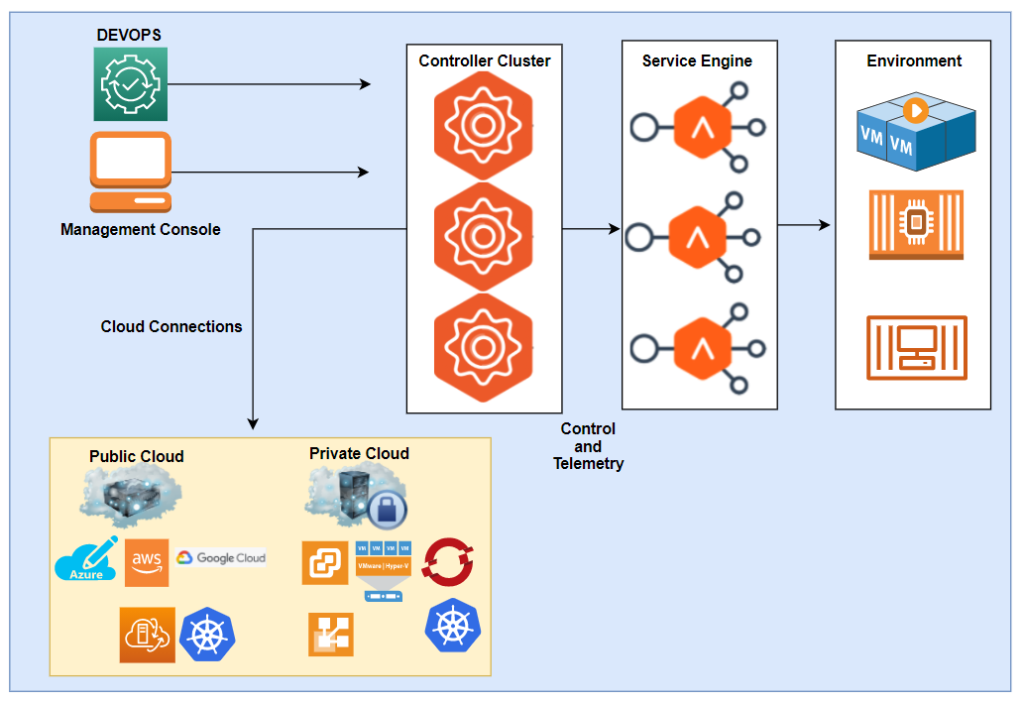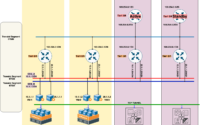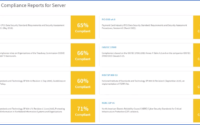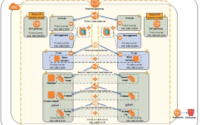NSX-T ALB AVI Series : Part01
Introduction
In this series we will go through the different use cases of NSX advanced Load Balancer ( Formerly called AVI Vantage ) which brought the new architecture for application delivery. We will refer NSX-T ALB as AVI as I am more
We will go through the installation process, architecture discussion and it’s integration with various environment like NSX-T,ACI, VCD, VMware Tanzu, Multicloud (AWS, Azure and Google Cloud), etc.
Features
When it comes to Application Delivery portfolio there are many vendors who are in the market like F5, Citrix, Imperva and many more. When it comes to NSX-T ALB it brings more on table which is moreover suits the current applications development.
Hybrid Cloud:
Nowadays we see the applications are not stitched to one infra and have elasticity to move from one environment to another, as an example application can be migrated from On-Prem to Public cloud or vice versa as well as it could VM or Container based. So in that context we should have infra which can give that features, and this is one of the major advantage of AVI which can be deployed under any infra under same glass plane.

True SDN:
As we have seen there has been a great effort from many vendors to develop their SDN offering in respect to enterprise and data center networking, but there was still major drawback in basic architecture in Application delivery domain where the traffic was stirred under one major fault-domain. Though we were to successfully make more availability and reliability from network layer by adopting distributing the system.
But when it comes to application delivery most of the vendor currently uses same conventional method where management, control and data plane on one box. This architecture brings huge load on one box when the traffic steers .

Intelligence:
There has been constant effort from public cloud with the feature of auto-scaling that gives options for application to adjust the capacity on the need basis, and we must agree they have been very successful in this regards.
But when it comes to Private cloud this trend has started recently and from application and server point of view it is achievable, but when it comes to application delivery infra this is one piece which at this moment AVI offers all because of their elastic nature of architecture from data plane.

Modern Application Delivery:
In modern days we are seeing the applications are not only developed on VM based, rather it has changed it’s posture to adopt into container world. This is the time where many organization are still exploring the options to get the same features as they are now doing with baremetal and VM based application for feature of load balancing, WAF, etc.
AVI brings the opportunity to deliver this again with same glass plane and integrates with various orchestration platforms such as Kubernetes, VMware Tanzu, Red-Hat Open-Shift on VM, Bare-metal or multi-cloud and multi-region.

To know more features, we can visit Avi Networks website.
AVI Architecture
NSX-T ALB AVI architecture consist of 2 major components:
1. AVI Controller:
As like any SDN architecture Controller serves as “brain” of the entire AVI platform, where this nodes are in cluster and gives the single point of Management plane.( This is same to NSX-T architecture where Controller and Managers are on same node). Controller cluster collects the information and on that basis programs the AVI service Engine, and keeps track to the health of client, server traffic and build modern analytics.
2. AVI Service Engine:
AVI service engines is meant for handling the Data Plane and gets programmed by AVI Controller cluster as per the need of one application.( This is also very same to previous architecture of NSX where Edges can be deployed either in shared or dedicated mode). But AVI gives way more option as one Application Delivery product should offer like Load Balancing, Global Load Balancing and WAF for the application security.

Summary
In this Part-01 we discussed the major features and benefits what AVI brings and we also understood how it fits into modern application delivery. We also went through the architecture of AVI and tried to understand the different components Controller and Service Engine. In next part we will discuss the installation and integration part.
If you want to get more deep insight Mohammed will be delivering in upcoming session of VMworld : VMTN2861
Thanks again to visit the blog, happy learning.


